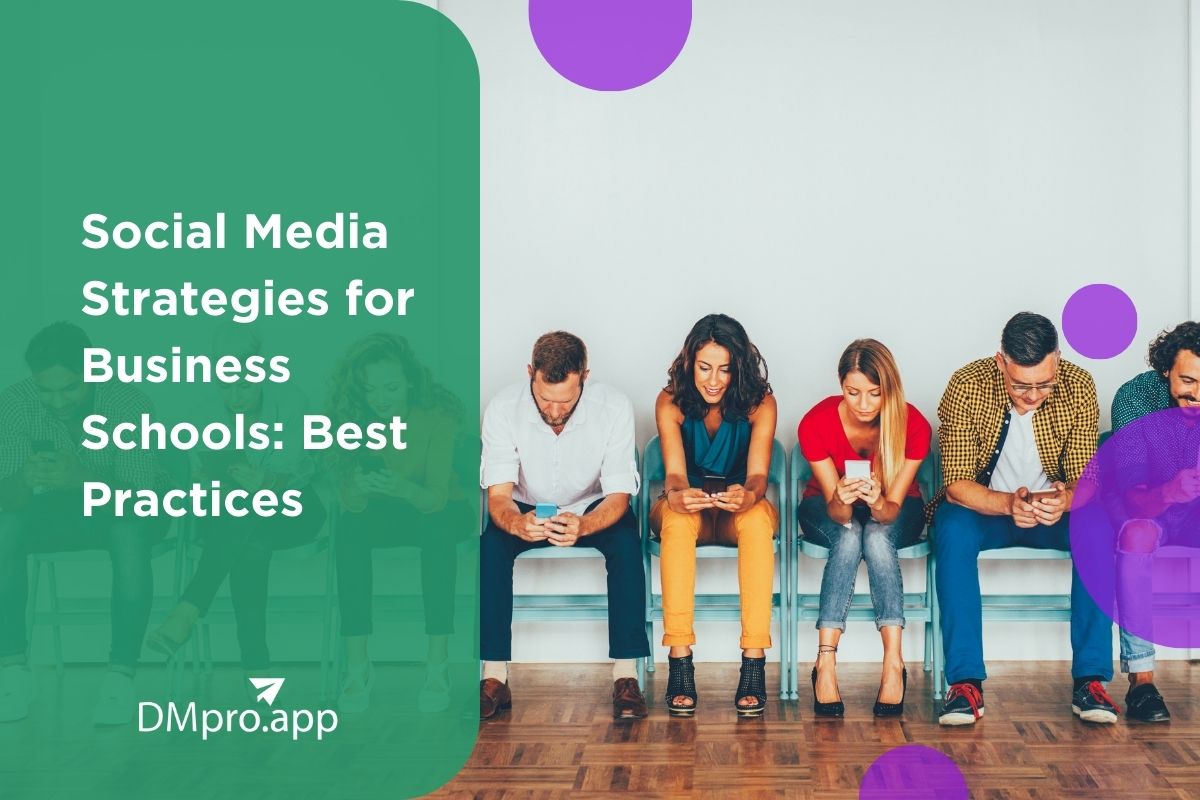In this hyper-connected era, there are various social media strategies for business schools when it comes to the bustling world of digital marketing. Gone are the days when a solid online footprint was a “nice-to-have” – today, it’s a flat-out necessity.
Tools like Facebook, LinkedIn, Twitter, and Instagram aren’t trendy platforms; they are conduits to essential relationships – be it students, faculty, proud alums, or industry insiders. But access to these social media marketing tools doesn’t guarantee success; the finesse in using them counts.
Dive into this article for a comprehensive guide on crafting engaging and fruitful social media strategies for business schools. Let’s start.
Table of Contents
Toggle#1 Forge an Indomitable Brand Persona
Imagine your brand as a multi-dimensional character in a gripping novel. Would you continue reading if the feeling is vague, flat, or boring? I doubt it. Your brand identity should be a reflective canvas displaying your school’s core values, the exclusive education propositions you offer, and the authentic culture you’ve cultivated within your institution.
Your social media voice, the curated aesthetics in your images, and even your posts’ timing aren’t trivialities. They need deliberate orchestration. Remember, consistency isn’t a buzzword; it’s the bedrock of trust, and trust keeps your audience coming back for more.
#2 Curate Content That Strikes a Chord
The age-old mantra, ‘Content is King,’ has endured and evolved in our information-saturated era. Content that fills up space won’t cut it. Your output needs to touch hearts and ignite minds.
From offering weekly how-tos on crafting razor-sharp MBA application essays and spotlighting the grand successes of your alumni network to running real-time Twitter debates on buzzworthy industry topics, every pixel and word must serve a distinct purpose.
In this context, consider services as an MBA essay writing service lighthouse for your students. This isn’t about outsourcing assignments but raising the bar of academic achievement.
With such resources, students can divert their mental bandwidth to mastering complex financial algorithms or dissecting marketing strategies, confident that their essay writing assignments are in the care of seasoned professionals.
#3 Leverage Analytics for Tailored Engagement
In social media, data, and analytics wait like untapped gold mines. A mere tally of likes and retweets offers a surface-level understanding at best. Dig into metrics like user engagement rates, click-through percentages, and peak online activity hours for your student audience for nuanced insights.
These aren’t soulless numbers; they are navigational cues to recalibrate your university strategy, ensuring your content doesn’t illuminate but also captivates.
Should you yearn to deepen your grasp of how social media is revolutionizing marketing paradigms, the Journal of the Academy of Marketing Science is your treasure trove, particularly their enlightening article on the future of social media in marketing.
#4 Embrace Community Collaboration and Feedback Loop
In the fast-paced world of social media, two-way communication is vital. The traditional model of broadcasting messages needs to be updated. Instead, aim for a conversational approach to foster a community atmosphere.
Encourage students, faculty, alumni, and outsiders to share their thoughts, queries, and constructive criticisms. Run live Q&A sessions, spotlight school and university community achievements, or host interactive webinars to add value to your education audience.
In addition to offering priceless insights, this approach helps your stakeholders feel heard and appreciated. Your content and approach may be adjusted to better reflect the needs and opinions of your community by integrating this input. This will allow you to transform your social media platforms into cooperative areas that increase trust and participation.
#5 Face the Uncertainties with Preparedness
Being active on social media is like navigating a minefield. The rewards are many, yet one false move might mean disaster. Threats range from unlawful data access and viral disinformation to significant reputational harm to your institution.
What is the antidote? Robust data protection standards and a well-oiled crisis management framework allow quick and transparent communication during times of turbulence.
Conclusion
In today’s fast-paced world of learning, a business school must do more than just high scores to be competitive. To keep people engaged in what you’re doing, you need social media strategies for business schools, and a strong online presence, such as a secure, trustworthy, and enjoyable social media presence.
This game plan, built with care, based on useful figure crunching, and being loyal to who you are, might transform your school from a player to a leader in today’s hard world of education.
FAQs
Have questions about implementing effective social media strategies for business schools? We’ve compiled some frequently asked questions to provide you with additional insights on this topic.
Q1. How Often Should We Post on Social Media for Optimal Engagement?
Maintaining a consistent posting schedule is crucial for social media success. The frequency of your posts depends on your audience and platform, but a good starting point is 3-5 times a week.
However, the key is quality over quantity. Tailor your content to resonate with your audience and strive for engagement rather than just posting for the sake of it.
Q2. How Can We Measure the ROI of Our Social Media Strategies for Business Schools?
Measuring the Return on Investment (ROI) for social media can be challenging, but it’s essential. Focus on tracking key performance indicators (KPIs) like website traffic, lead generation, and enrollment rates attributed to your social media campaigns.
Alao, utilize analytics tools to assess which posts and campaigns are driving the most impact, and adjust your strategy accordingly. Remember that the value of social media extends beyond direct ROI, as it helps build brand reputation and engagement over time.


